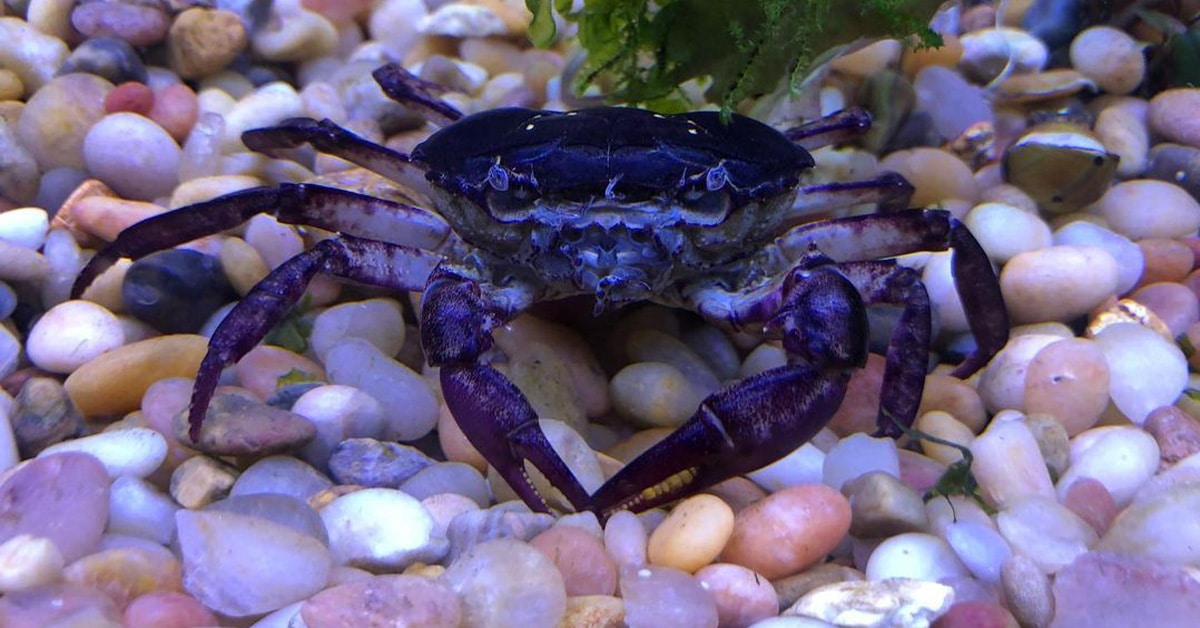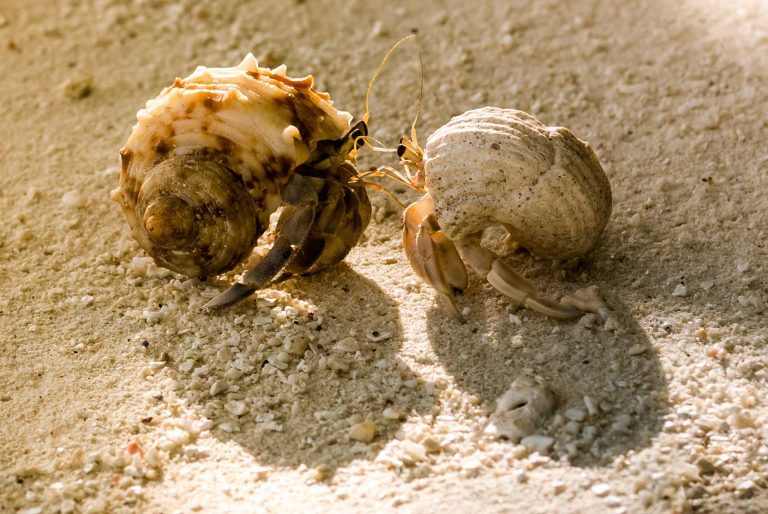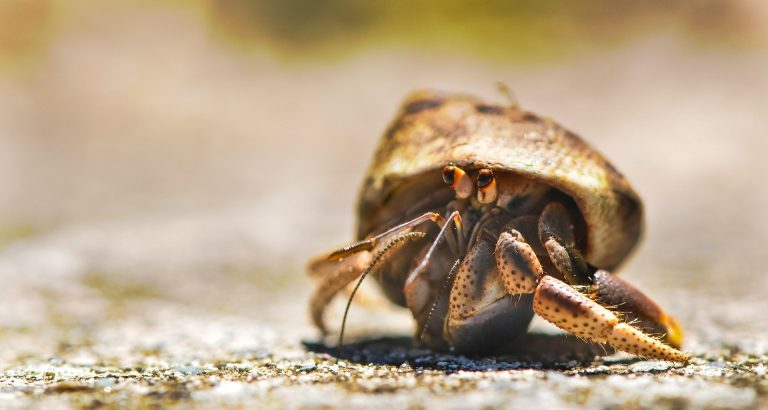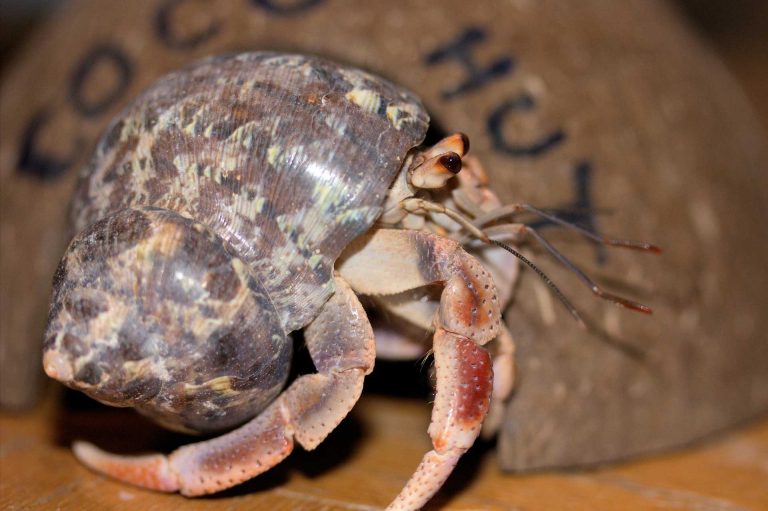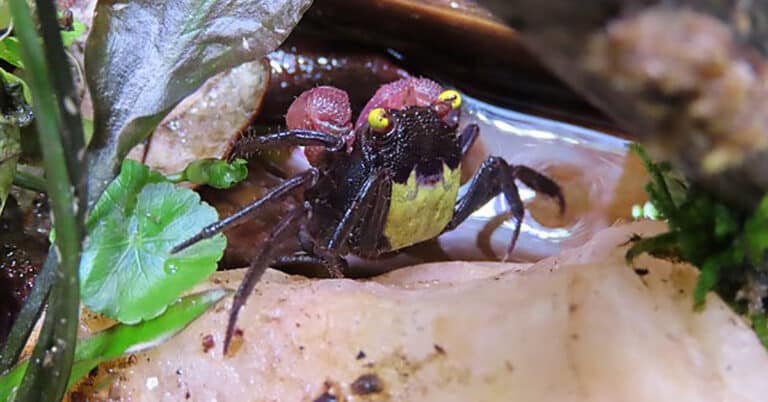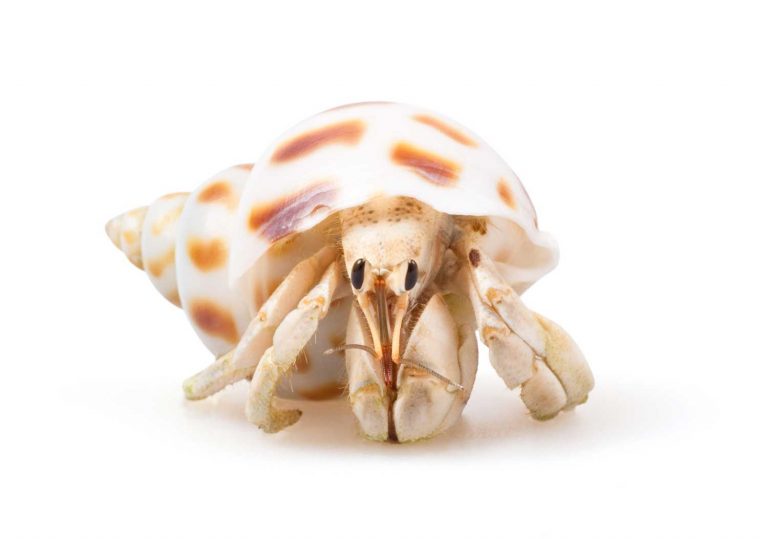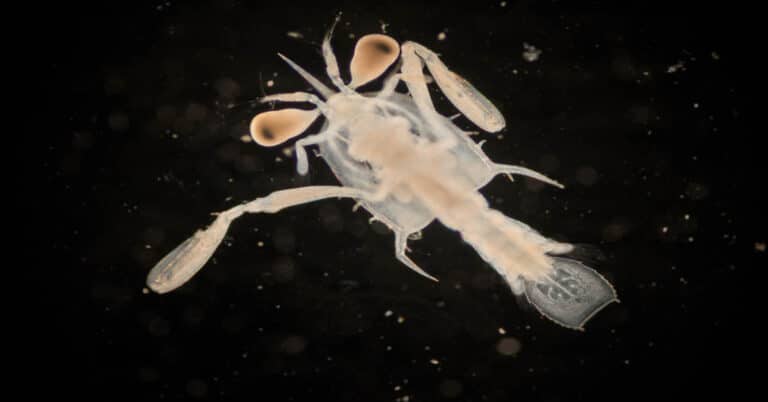Thai Devil Crab – Behavior, Size, and Care Tips
If you don’t believe in superstitions, don’t pay attention to verbal meanings, and are a devotee of the extraordinary, you should unquestionably consider the Thai Devil Crab as an inhabitant of your aquarium. Just saying its name sounds exciting, not to mention the visuals of this crab!
Thai Devil Crabs can make captivating pets for you if you are seeking unique companions. Their low-maintenance care requirements and distinctive behaviors offer a fascinating experience. Even watching them while exploring their habitat and interacting with other fish can be quite entertaining.
In this article, we’ll address every query you have about Thai Devil Crabs. You will discover the answers to your questions on how to care for them, their lifespans, and even which aquarium species make the best companions for them.
Origin of Thai Devil Crab
The Thai Devil Crab, scientifically known as Cardisoma carnifex, belongs to the family of land crabs and is commonly found in the Red Sea and along the eastern coast of Africa. These distinctive crabs inhabit various regions, ranging from the Indo-Pacific to the Tuamotus. They are particularly abundant in the Northern Great Barrier Reef and the Southern Islands of Japan.
In the Philippines, specifically on Palawan Island, the Thai Devil Crab can be observed in several areas, including Dumaran, Taytay, El Nido, Magsaysay, and Puerto Princesa City. They also dominate the Cocos Islands in the Indian Ocean and certain parts of Northern Australia.
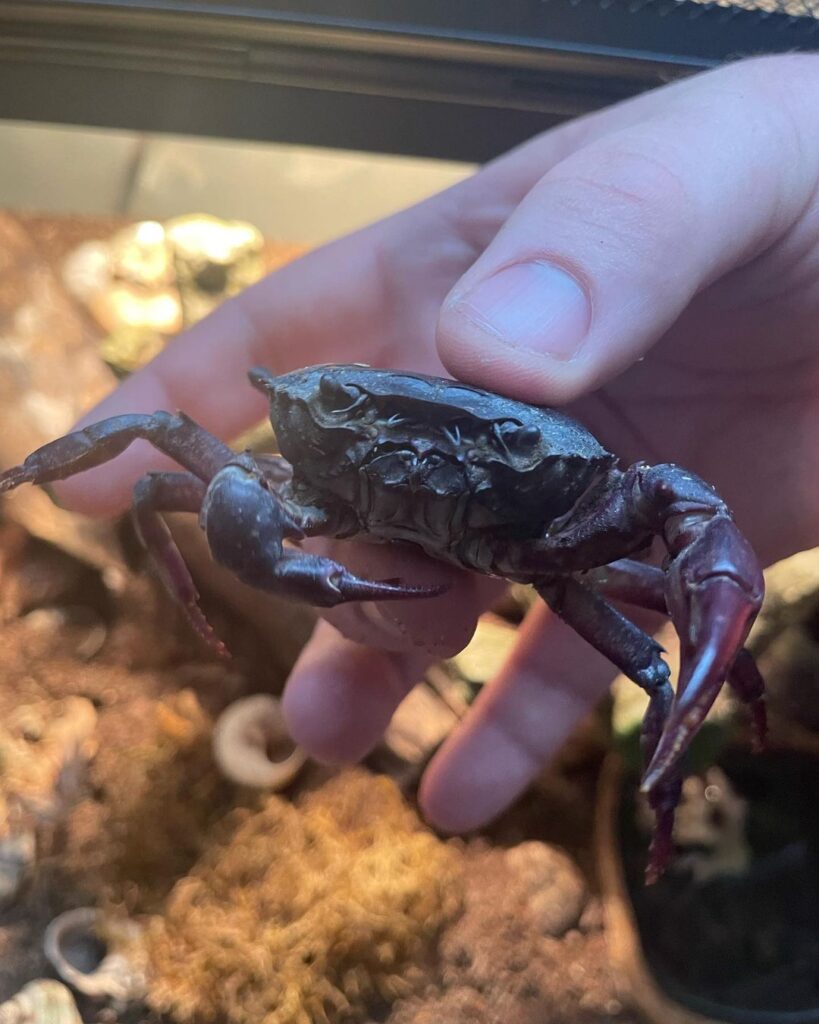
Purple Thai Devil Crab: Early Stage of Thai Devil Crab Appearance
The Thai Devil Crab gets its unique name from the way it looks. As you can see, the name “Cardisoma” can be broken down into two parts: “Cardi,” which means “heart,” and “soma,” which means “body.” This name makes sense because the crab has a body that looks a bit like a heart, with two sections called the carapace and leg space.
Usually, these crabs are mostly grayish-blue or brownish-gray in color. Their color gets lighter as you move towards their sides. But when they are born, freshly molted, or when they are young, they have a purple body. That’s why they’re sometimes called Purple Thai Devil Crabs during these stages.
Now, if you want to figure out if a crab is a boy or a girl, there are some things you can check.
- First, look at their belly shape. In female crabs, the belly plate is wider, while in males, it’s slimmer and more like a triangle.
- Next, check out their claws. Male crabs have bigger claws than females, and these claws match the color of their bodies. Also, the very tips of their claw fingers are cream-colored.
So, if you ever spot a Thai Devil Crab, you can tell a lot about it by its name and its appearance, and you might even be able to figure out if it’s a male or a female!
Behavioral Patterns of Thai Devil Crab
Contrary to what many people might think, Thai devil crabs are fully adapted to living on land. This means you won’t typically find them near the ocean, instead, they can be discovered several kilometers away. To maintain the right amount of moisture in their bodies, these crabs dig deep burrows that can go as deep as 2 meters, which is almost 7 feet below the ground.
Even though Thai devil crabs are land-dwellers, they have specialized lungs and require moisture to breathe. This is a key reason why they invest so much effort in digging those deep burrows. Once they’ve established their homes, they tend to stick with them for life, as they’re not big fans of change. Like most crabs, these creatures prefer a solitary lifestyle and don’t form social groups. Loneliness isn’t a concern for them.
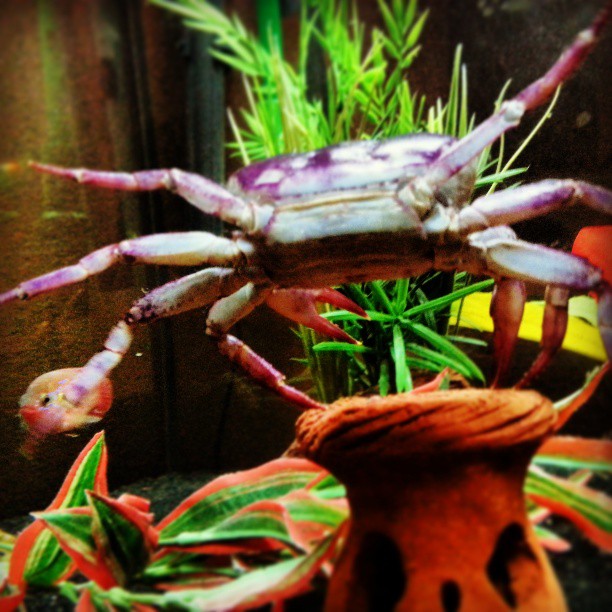
Thai Devil Crab Size
The Thai Devil Crab’s body comprises 2 distinct components: the carapace and the leg space. The overall size of this species is determined by considering the individual dimensions of these two body parts. Specifically, for adult Thai Devil Crabs, the carapace reaches a maximum length ranging from 3 to 5 inches, while the leg space or limbs can span between 6 to 8 inches.
It’s worth noting that the size of Thai Devil Crabs surpasses that of many common aquatic species, such as fish and snails. In particular, they can weigh upwards of 1 pound (480 grams) with males tend to be slightly larger than their female counterparts. Consequently, providing a more capacious tank is advisable to ensure these crabs have enough room for movement and growth.
How to Take Care of Thai Devil Crab?
To promote the well-being of your Thai Devil Crab in captivity, it is crucial to establish a specialized tank arrangement. Here are 4 vital considerations to properly care for your Thai Devil Crab within its tank:
1. Tank Size
To accommodate Thai Devil Crabs, it’s important to provide them with ample tank space. For a single Thai Devil Crab, a tank size of at least 15 gallons is recommended. However, if you plan to keep more than one, it’s advisable to increase the tank’s size accordingly.
Once Thai Devil Crabs reach full maturity, a male and female pair would require a minimum tank size of 40 gallons to ensure their well-being. On the other hand, if you intend to house two male Thai Devil Crabs together, it’s essential to provide even more space. This increased space reduces the likelihood of territorial conflicts among the crabs.
2. Water Requirement
Maintaining the water conditions for Thai Devil Crabs is a manageable task, as these land-dwelling creatures thrive in aquariums with minimal water. To create an ideal habitat, ensure that at least 90 percent of the tank space is dedicated to land rather than water.
When adding water to their tanks, it’s crucial to use a blend of saltwater and freshwater. Avoid using ordinary aquarium salt or table salt, instead, opt for instant ocean marine salt, which is readily available at local stores.
For freshwater, it’s recommended to use bottled spring or distilled water. If you prefer using tap water, allow it to age for a minimum of 24 hours before introducing it to the tank.
3. Temperature and Humidity
An optimal setting for maintaining Thai Devil Crabs involves creating a warm and humid environment. While these creatures display adaptability towards variations in temperature and humidity, it remains crucial to monitor and maintain these conditions diligently. Ideally, the tank should maintain a temperature range of 71 to 79 degrees Fahrenheit, with humidity levels consistently exceeding 60 percent for the safety and well-being of these crabs.
4. Substrate and Decoration
The tank should be filled with a mixture of damp sand or mud that allows for digging. The substrate should be consistently moist, maintaining its shape when squeezed, but not overly wet to the point of dripping or pooling. A blend of coco fiber and sand is recommended for creating an ideal environment for Thai Devil crabs, achieving a uniform sandcastle-like texture.
Incorporating various elements such as leaves, pebbles, wood, plants, PVC pipes, and other decorations will enhance the habitat for Thai Devil crabs. Providing ample hiding spots is essential to reduce stress in crabs, particularly during the molting process.
Suitable Tank Mates for Thai Devil Crab
The Thai Devil Crab stands out from many other crab species due to its relatively non-aggressive nature. While it can’t be classified as entirely peaceful, it falls into the semi-aggressive category and may resort to attacks on tank mates if they intrude on its territory.
Ideally, the best tank mates for the Thai Devil Crab would be individuals of the opposite gender from its species. A male Thai Devil Crab tends to coexist harmoniously with a female counterpart but may display hostility towards other males sharing the tank.
Beyond members of its species, it is possible to introduce tranquil fish, dwarf shrimp, and snails into the same tank. These aquatic creatures predominantly inhabit the water, whereas the Thai Devil Crab prefers terrestrial areas. If you create this separation, with the crab primarily on land and the other aquatic inhabitants in the water, chances are that you can maintain a more peaceful tank environment.
How Long Does Thai Devil Crab Live?
Keeping the Thai Devil Crab in an aquarium can be a bit demanding in terms of space, but it proves to be a robust and resilient species when well-maintained in captivity. With proper care, these crabs have the potential to live for a substantial duration, ranging from 5 to 15 years.
The lifespan of the Thai Devil Crab is intricately tied to the quality of care provided in their tanks, as their hardy nature allows them to adapt to various environmental conditions. However, it’s essential to exercise caution when making significant changes to the tank conditions.
Final Thoughts
Overall, the Thai Devil Crab lives quite a long time, is easy to care for, and adds an amazing sight to the aquarium. What more could someone looking for an impressive new addition to their aquarium want?
Having Thai Devil Crab in your aquarium is a genuine treat, especially if we take into account the ease with which you can get them if you have access to aquarium shops or internet vendors. But, don’t forget to ensure you are prepared to meet their specific care requirements before bringing them into your aquarium.

Nato is a content writer and researcher with a background in psychology who’s eager to explore the wonders of nature. As a travel enthusiast and animal lover, she hopes to inspire others to discover and cherish the beauty and importance of the natural world.

